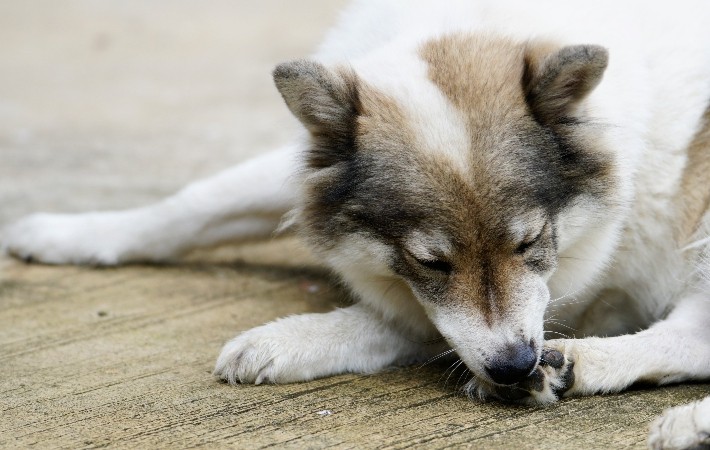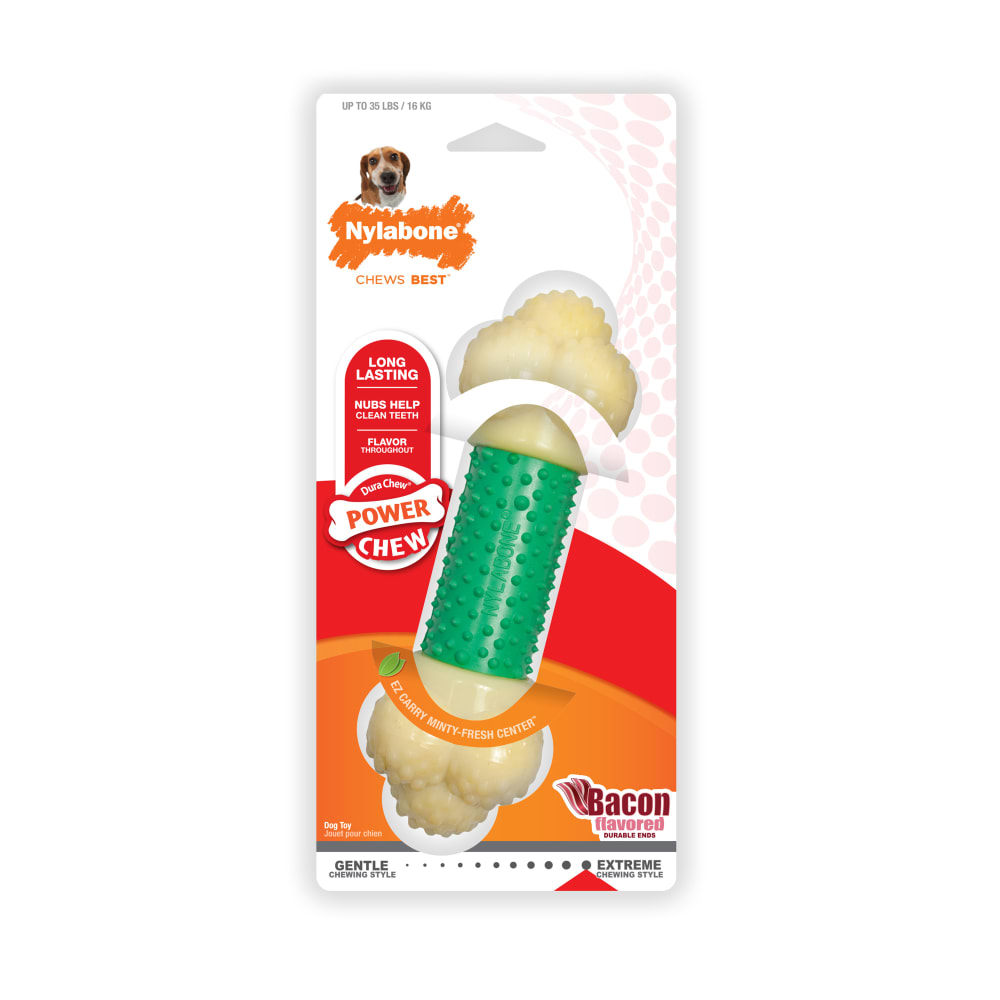Why Do Dogs Chase Their Tails (and Is It a Problem)?
When it comes to acting adorable, dogs are experts—especially in front of a camera! And no compilation of funny puppy antics would be complete without a furry friend clumsily running in circles trying to catch their tail over and over again.
Although this quirky habit makes onlookers chuckle, it might also raise some questions: Why do dogs chase their tails in the first place? Why do puppies seem to chase their tails more often than adult dogs? Is it a problem or just innocent play? Here’s what you need to know!
Why Do Dogs Chase Their Tails? It Depends…
As with many behaviors, there are multiple reasons why a dog might chase their tail in circles. These are the most common explanations.
Reason #1: They’re Feeling Playful
Many dogs see tail chasing as a fun activity. Young pups who are still learning about their body and surroundings often follow their tail, and they may even see it as a toy. It’s a simple but exciting game for one!
Reason #2: They Want Some Attention
Dogs can understand humans and are great at using cuteness to their advantage. Just as a dog may learn that begging with wide-open eyes might earn them a treat, they may also discover that chasing their tail in front of their pet parent leads to positive attention. So, your furry friend may see tail chasing as a magnet for love and cuddles!
Reason #3: They’re Bored or Anxious
When dogs don’t get enough physical or mental stimulation, they sometimes find their own ways to stay entertained. Chasing their tail, experiencing a case of the dog zoomies, chewing everything in sight, and digging are all common ways dogs release pent-up energy and let you know they’re bored. Likewise, dogs who are anxious from things like thunderstorms or spending time home alone may engage in similar behaviors.
Reason #4: They Have a Medical Condition
Excessive tail chasing could indicate something more serious is happening. If your dog appears to be scratching or licking their tail, fleas or allergies may be causing skin irritation. In more complex cases, a neurological issue called canine compulsive disorder (CCD) may lead to this repetitive behavior. Contact your veterinarian if you suspect your dog’s tail-chasing habit seems unusual.
Do Puppies Chase Their Tails More Than Adults?

Puppies are especially likely to chase their tails for fun. While dogs often outgrow this self-entertaining habit in adulthood, puppies enjoy tail chasing as an easy, active way to interact with both their body and their surroundings. Pups who are still learning about their anatomy might mistake their tail for prey, providing another reason why young dogs may chase their tails in circles more often than adults.
Are Certain Breeds More Likely to Chase Their Tails?
Active breeds who need plenty of physical exercise may be more likely to chase their tails out of boredom. Tail chasing may also be seen in herding dog breeds (especially when they get frustrated), according to VCA Animal Hospitals. So, don’t be surprised to see active herders like Border Collies, German Shepherds, Australian Shepherds, and Corgis zooming around in circles!
How Can You Stop Your Dog from Chasing Their Tail?
If you have a growing puppy who is chasing their tail for sport, there’s no need to intervene. Adult dogs who frequently partake in the activity, however, may be experiencing one of the issues mentioned above. Try these solutions to address problematic tail chasing.
Offer Toys and Playtime
Enriching your dog’s mind with long-lasting chew toys will provide a healthy alternative to tail chasing—and encourage non-destructive chewing habits in the process! It’s also a good idea to keep your dog active with daily playtime. Enrichment activities like treat toys and dog brain games are a surefire way to give your dog a mental and physical challenge.
🐶 RELATED: The Best Types of Toys for Bored Dogs
Ignore Them (As Best You Can)
This can be a tough one for pet parents! If your dog frequently chases their tail for attention, this cute activity could quickly become an annoyance. Ignore their tail-chasing behavior to show that it won’t lead to praise, and avoid yelling at your dog to stop (negative attention is still attention for many furry friends). Instead, only give them positive feedback when they stop chasing. You can also throw them a tasty dog treat after they calm down!
Talk to Your Veterinarian
Does your dog appear to be in pain when they’re chasing their tail? Your veterinarian can diagnose any underlying medical conditions and offer treatment, giving you and your furry friend peace of mind!
What Are Some Other Common Repetitive Behaviors?

Tail chasing is just one of many coping mechanisms dogs may use. If your best friend engages in any of these behaviors frequently, they may be experiencing stress, boredom, or a medical condition:
- Licking themselves
- Chewing their paws or tail
- Barking or whining
- Pacing
- Chasing light or their shadow
- Fly snapping (biting at the air)
Don’t Let Things Spin Out of Control
Much of the time, tail chasing is a harmless activity! If your dog seems to obsess over this habit though, you should pay close attention to see if something else is going on. Make sure your pup gets enough physical and mental activity, and don’t forget to take them for their scheduled vet visits.
Learning why dogs chase their tails may make you wonder about more unusual behaviors. Discover the reasons behind other common canine quirks:
FOLLOW US!


.jpg?h=&hash=BAB8064A3C18BD234D90A247086DCD24)




